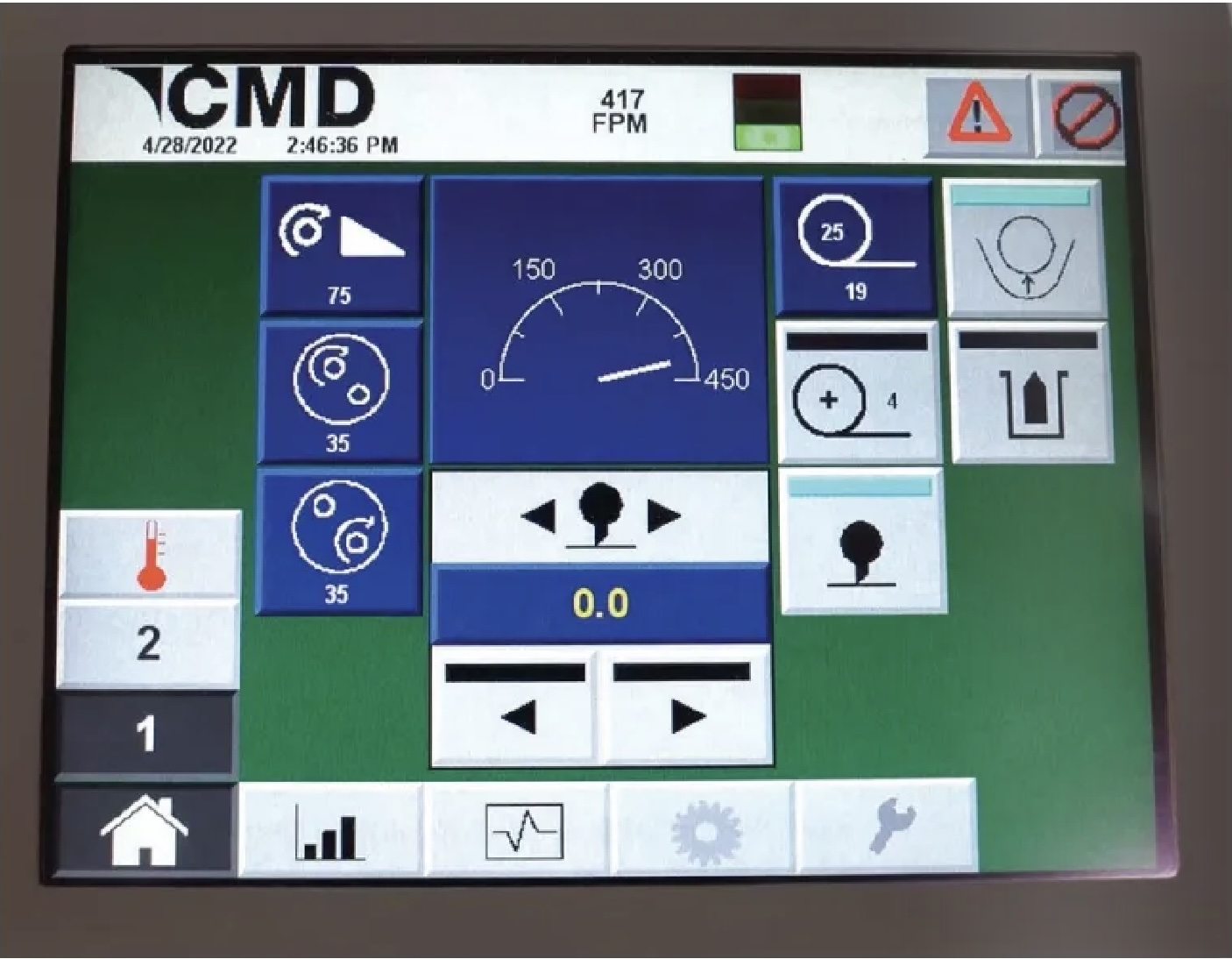A Look at Meeting Customer Demands
- Published: October 21, 2024

Innovations to Address Labor Shortages in Bag Converting
By Craig Mickelson, Machine Upgrade Specialist, CMD
Labor shortages in manufacturing and converting have become a prevalent issue, with companies struggling to find qualified workers for skilled positions. The departure of baby boomers from the labor market and the impact of the pandemic have compounded the problem, creating a perfect storm in the hiring and retention sectors. As a result, converters are facing significant challenges in finding and retaining experienced employees who possess valuable skills and expertise.
Along with personnel shortages, converters are also facing price increases, material supply chain disruptions and increasing customer demand for quicker turnaround times. This leads to them placing pressure on OEMs for faster speeds, easier-to-use controls and platforms, easier-to-access designs for quicker changeovers, the ability to run and maintain machines with fewer personnel, less waste and continuous support to avoid downtime.
Quick Change
One of the biggest challenges in bag converting is changing over from one product to another. Traditional bag-converting equipment requires significant time and effort to change the machine to a new product. This process can take several hours and requires skilled operators to complete. However, this process has become much faster and easier with the introduction of quick-change technology.
Adding features for quicker changeovers and automating some of the setup and adjustment processes can reduce the time required to complete changeovers and minimize the amount of film used during setup. This technology includes quick-release clamps, preset adjustments and tool-less changeovers. By simplifying the changeover process, bag-converting companies can significantly reduce their downtime and improve productivity.
Auto Splicing on Parent/Master Rolls
Another innovation in bag-converting equipment is auto-splicing on parent/master rolls. This technology allows automatic film splicing when the parent/master roll runs out. This eliminates the need for operators to stop the machine to splice the film manually, which can be a time-consuming and error-prone process. Auto-splicing technology uses sensors to detect when the parent/master roll is about to run out. The machine then automatically splices the new roll onto the end of the old roll, ensuring a continuous film feed.
This technology can significantly reduce downtime and improve productivity, as operators no longer need to manually stop the machine to splice the film.
Pack-Off Automation
Pack-off automation is a further advancement in converting equipment, aiding companies in enhancing efficiency and cutting costs. This innovation automates the process of packing bags, pouches and other types of flexible packaging into boxes or other containers - which significantly reduces manual labor and allows operators to focus on more diverse tasks. This technology also plays a crucial role in reducing repetitive motion, a major cause of stress and injury in the workplace. Automating the packing process eliminates the potential for human error and product damage, ensuring that products are delivered to customers in perfect condition.
Utilizing automation can lead to substantial time savings. Automated systems can perform packaging tasks much faster than manual labor, increasing overall productivity. This allows businesses to meet higher production demands and reduce lead times, improving customer satisfaction and potentially increasing sales.

User Friendly Features and Training
Bag-converting machines should utilize user-friendly and intuitive features that streamline the production process. Easy-to-use interfaces allow operators to input settings and specifications effortlessly, and visual indicators help operators monitor the machine's performance and adjust as needed. Overall, these user-friendly features increase efficiency and productivity in bag manufacturing processes.
Advancements in data analytics and connectivity enable real-time monitoring and control of bag making equipment. This in turn empowers converters with comprehensive insights and performance metrics, enabling them to make proactive decisions and drive continuous process improvement. By harnessing real-time data, stakeholders can swiftly identify operational inefficiencies, optimize equipment performance and leverage actionable insights to enhance overall productivity and quality control.
Training is crucial for ensuring that operators are proficient in the setup, operation and maintenance of bag converting equipment. Collaborating with an OEM that offers customized training programs can guarantee that the training aligns with evolving needs and enables operators to enhance their expertise and proficiency in utilizing technology and equipment.
Challenges of Implementing Labor-Saving Innovations
While implementing labor-saving innovations on bag-converting equipment has many benefits, companies may face some challenges. One of the biggest challenges is the cost of implementing these technologies. Labor-saving innovations can be expensive, and companies may need to invest in new or retrofit existing equipment to incorporate these features.
In conclusion, labor-saving innovations in bag-converting equipment are changing the industry. Quick change technology, auto splicing on parent/master rolls and pack-off automation are just a few of the innovations helping companies improve their efficiency and reduce their costs.
While implementing these technologies can be challenging, the benefits are clear. By investing in labor-saving innovations, companies can stay competitive in an increasingly fast-paced and demanding business environment.
About the Author
With an Electromechanical Degree from FVTC, Craig Mickelson began his journey at CMD in 2016. Starting in Technical Services, Craig demonstrated his expertise, leading to a transition to the role of Machine Upgrade Specialist in January 2020. In his current role, Craig works closely with all CMD customers, leveraging his technical and industry knowledge to enhance their machines and deliver tailored solutions.




